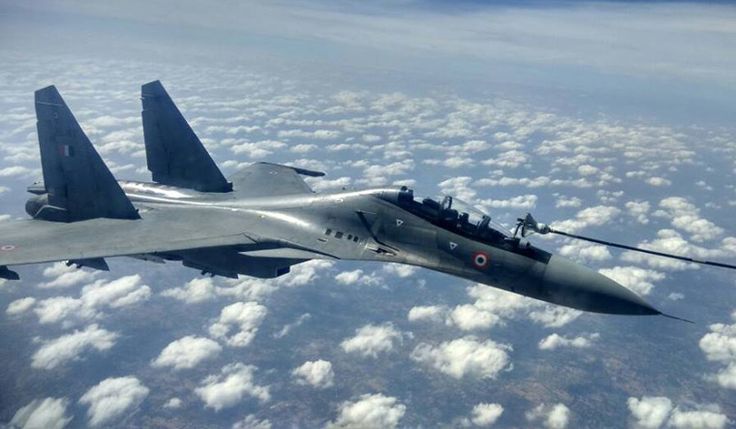Pahalgam Attack 2025 and India’s Response: Exercise Aakraman
On April 22, 2025, tragedy struck the serene Baisaran Valley near Pahalgam, Jammu and Kashmir, when a group of heavily armed militants launched a brutal attack on a gathering of tourists. At least 26 civilians lost their lives, and over 30 others were seriously injured in the ambush that has since been described as one of the deadliest assaults in the region’s recent history.
Timeline of the Pahalgam Attack 2025
-
2:50 PM IST: Militants, disguised in military-style fatigues, emerged from the dense forests surrounding the meadow and opened indiscriminate fire on tourists, many of whom were families enjoying the popular spot.
-
3:00 PM IST: Local authorities and emergency responders were alerted. Given the remote nature of Baisaran, reaching the site was challenging. Helicopters and quick-response teams were dispatched to airlift the wounded and recover the deceased.
-
Evening Hours: Initial responsibility for the attack was claimed by The Resistance Front (TRF), believed to be affiliated with Lashkar-e-Taiba. However, in a surprising development, the group later retracted its claim, adding to the complexity of ongoing investigations.
The attack has fueled widespread grief across India and has led to a sharp spike in tensions with Pakistan, as security agencies traced the origins and planning of the assault to terror groups operating across the border.
India’s Immediate Response: Launch of Exercise Aakraman
In the aftermath of the Pahalgam attack, the Indian Air Force swiftly launched Exercise Aakraman, a full-spectrum air operations drill, to reinforce national security and demonstrate India’s military preparedness.
Objectives and Scope of Exercise Aakraman
-
Purpose: To enhance operational readiness, simulate full-scale combat scenarios, and fine-tune rapid response mechanisms across air, land, and sea domains.
-
Aircraft and Systems Deployed:
-
Dassault Rafale multirole fighters
-
Sukhoi Su-30MKI air dominance fighters
-
MiG-21s
-
S-400 Triumf Air Defence Systems
-
Airborne Early Warning & Control (AEW&C) aircraft
-
Mid-air refuelling tankers
-
Garud Special Forces
-
-
Operational Themes:
-
Complex precision strikes on simulated enemy positions.
-
Electronic warfare exercises to jam and disable enemy communications.
-
Coordinated counter-air and ground support missions.
-
Air superiority missions across varied terrains — deserts, mountains, and coastal regions.
-
-
Integration: Joint missions with the Indian Army and Indian Navy highlighted seamless tri-services coordination, showcasing India’s ability to conduct multi-domain operations under a unified command.
Day-by-Day Progression
-
April 24-25, 2025: Intense sorties and combat air patrols began, with Rafales and Su-30MKIs leading offensive missions.
-
April 26, 2025: Full integration of S-400 air defence grids, ensuring complete airspace monitoring and rapid interception drills.
-
April 27, 2025: Large-scale joint exercises with army strike corps and naval aviation units. Simulated rapid deployment operations and amphibious landing drills.
Broader Implications
Exercise Aakraman has been widely viewed as a strategic signal to adversaries that India is fully capable and prepared to defend its territorial integrity. It also reflects the Indian military’s emphasis on modernization, readiness, and real-time coordination among its forces.
Moreover, the exercise serves as a deterrence measure at a time when diplomatic relations between India and Pakistan have sharply deteriorated. Following the Pahalgam massacre, India has also taken diplomatic steps such as suspending aspects of the Indus Waters Treaty, recalling diplomats, and reviewing trade ties.
International Reactions
The Pahalgam attack drew global condemnation:
-
The United Nations termed the killings as “heinous and unjustifiable under any circumstance.”
-
Several world leaders expressed solidarity with India, offering condolences and affirming the need to eliminate terrorism.
 Detailed Breakdown Report: Pahalgam Attack and India’s Response – Exercise Aakraman 2025
Detailed Breakdown Report: Pahalgam Attack and India’s Response – Exercise Aakraman 2025
I. Executive Summary
On April 22, 2025, a brutal terrorist attack in the Baisaran Valley near Pahalgam, Jammu and Kashmir, claimed 26 lives and left over 30 civilians injured. The attack targeted unarmed tourists and marked a grim escalation in terror activities in the region.
In a swift and powerful response, the Indian Air Force (IAF) launched Exercise Aakraman, a comprehensive, large-scale military exercise designed to bolster operational readiness, project deterrence, and prepare for high-intensity conflict scenarios.
II. Incident Overview: Pahalgam Terror Attack
A. Timeline of the Attack
-
2:50 PM IST, April 22, 2025:
Militants disguised in military gear opened fire on tourists in Baisaran Valley. -
3:00 PM IST:
Emergency services activated; initial evacuations began via helicopter due to the remote terrain. -
Evening Hours:
The Resistance Front (TRF) claimed responsibility, later retracting amid intelligence confusion.
B. Nature and Method of Attack
-
Attack Type: Coordinated armed assault.
-
Weapons Used: Automatic rifles, grenades.
-
Target: Civilian tourists, primarily domestic visitors.
-
Location: Baisaran Meadow, Pahalgam — a tourist-heavy, difficult-to-access area.
C. Casualties
-
Fatalities: 26 civilians (including 5 children and 3 elderly persons).
-
Injured: Over 30 individuals, many critically.


III. Immediate Aftermath and Security Response
A. Search and Rescue
-
Helicopter-based evacuation due to mountainous terrain.
-
Swift medical response with regional hospitals put on emergency alert.
B. Investigations
-
Preliminary reports indicated cross-border terror links.
-
Intelligence agencies commenced background tracing of TRF involvement.
C. Political and Diplomatic Fallout
-
Condemnations issued globally.
-
India initiated diplomatic measures against Pakistan, including summoning high commissions and preparing dossiers for international bodies.
IV. Strategic Military Response: Exercise Aakraman
A. Purpose and Objectives
-
Operational Readiness: Simulate full-spectrum warfare capabilities.
-
Demonstration of Strength: Serve as a deterrent against future provocations.
-
Tri-Services Coordination: Test and improve interoperability between Army, Navy, and Air Force.
B. Scale and Scope
-
Duration: Began late April 2025; ongoing operations planned for several weeks.
-
Operational Areas: North-Western frontiers, desert zones, and high-altitude terrains.
READ MORE: Pahalgam Terror Attack: Houses Demolished, Hundreds Detained
C. Key Components
| Area | Details |
|---|---|
| Air Assets | Rafale, Su-30MKI, MiG-21 fighters, AEW&C aircraft, mid-air refuellers |
| Ground Support | S-400 Air Defence Systems, mobile radar units |
| Special Forces | Garud Commandos deployed for strike simulations |
| Naval Operations | Maritime patrol aircraft coordination, amphibious drills with Army units |
V. Day-by-Day Operational Highlights
-
April 24-25, 2025:
Rafales and Su-30MKIs conducted synchronized mock strike operations against simulated enemy assets. -
April 26, 2025:
Air Defence phase initiated; S-400 systems engaged in intercept drills against simulated aerial threats. -
April 27, 2025:
Integrated tri-services maneuvers executed, including mock amphibious landings and rapid-deployment missions.
VI. Strategic and Tactical Significance
-
Psychological Impact: Projected India’s readiness and resilience to internal and external observers.
-
Operational Testing: Real-time simulation of joint-force deployment across varied battle environments.
-
Diplomatic Message: Reinforced India’s firm stance against terrorism and cross-border hostility.
VII. International Reactions
-
United Nations: Strongly condemned the Pahalgam attack; called for global unity against terrorism.
-
United States, France, Japan, and Australia: Extended condolences and affirmed bilateral cooperation on security issues with India.
VIII. Current Status (As of April 28, 2025)
-
Exercise Aakraman: Ongoing, with expanded air drills and simulated ground strikes expected.
-
Security in Jammu and Kashmir: High-alert status maintained; additional deployments in sensitive zones.
-
Investigation: Intelligence agencies pursuing leads into terror financing and logistical support for the attackers.
IX. FINAL WORDS
The Pahalgam attack stands as a painful reminder of the persistent threat of terrorism in the region. However, India’s decisive and calibrated military response through Exercise Aakraman has demonstrated not only its mourning but also its resolve — a clear message that acts of terror will be met with unmatched vigilance, strength, and national unity.
For a visual representation of Exercise Aakraman, you may refer to the following video:

